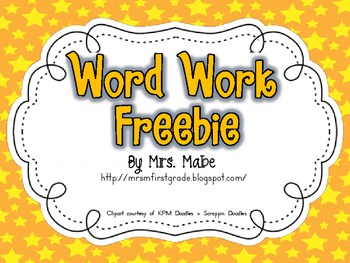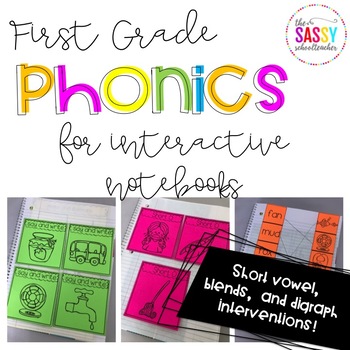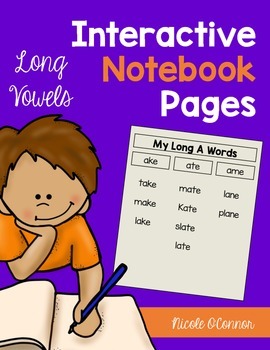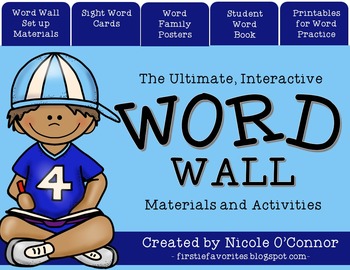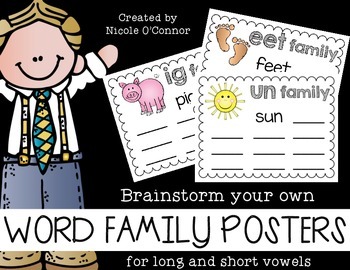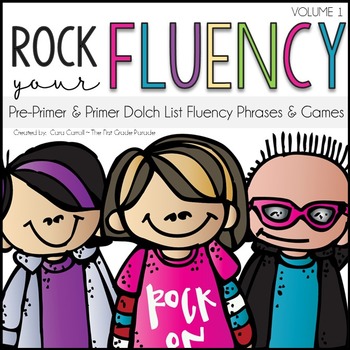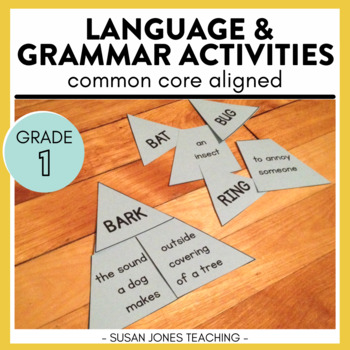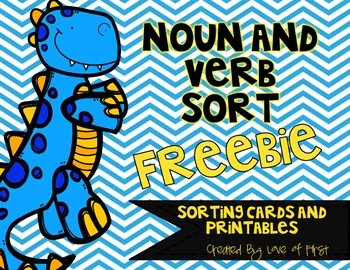Oh my gosh. I am so humbled by all of the support I have received from this fabulous TpT teaching community. I just LOVE sharing resources and collaborating with other teachers. This past week, I reached a personal milestone of 1,000 followers on TpT. I am simply blessed and I wanted to celebrate by planning a giveaway!
I LOVE creating gift baskets for different events and holidays. I decided to put together a cute little "My Favorite Things Care Package" for one lucky winner. Who doesn't love getting a fun package with goodies in the mail???
Including a fun scarf with matching earrings, 2 nail polish colors, to-do list notepad, patterned file folders, glitter pencils, and MORE!
To enter, simply complete the Rafflecopter at the bottom of this blog post... it's super quick and easy! Share this image out on Instagram and Facebook to help spread the word! Enter by midnight on Monday, July 27. One lucky winner will be announced on Tuesday! I will put the care package in the mail by early-mid August... just in time for back to school!
As part of my celebration, my TpT store will be discounted 20% on July 26 and July 27. Grab those must have back to school items!! Here's a link to my store!
a Rafflecopter giveaway
Sunday, July 26, 2015
Thursday, July 16, 2015
Daily 5: The key to an interactive Word Work Round
Welcome to my third post in my blog series about Daily 5. I hope that you enjoyed my other posts about how to get set up before the year begins and Read to Self. If you missed them, click these links to get caught up - How to Get Started with Daily 5 and Daily 5: Setting students up for Read to Self success.
Now, I want to put this out there right away and I said this in my other posts as well, I am in NO way affiliated with "the sisters" or the Daily 5 on any official platform. I think that the sisters are FANTASTIC and I highly recommend buying the most current Daily 5 book. But me? I am simply a first grade teacher who utilizes the Daily 5 framework and I have adapted it to meet my own needs.
Okay, today I am writing about my ABSOLUTE FAVORITE part of Daily 5. It is definitely my students' favorite as well. I have ALMOST ZERO behavior/management issues during this Daily 5 round and I attribute that to the interactive (As Fancy Nancy would say.... Interactive is a fancy word for "FUN.") nature of word work. For me, setting up Word Work is much simpler than other rounds of Daily 5, especially in the first few weeks of school.
I begin word work on the Monday of the second week of school. I begin by introducing our Word Work I-Chart.
After introducing the I-Chart, I like to introduce our first week of spelling words. Our first grade team has developed our own spelling lists, which consist of 7 word family words and 5 sight words each week. I have them available for FREE on Teachers Pay Teachers if you are interested in grabbing them- each week includes a spelling list to take home, spelling homework, a few practice pages, and a set of word list cards for the classroom. This is 27 weeks of spelling... We do a few review weeks throughout the year or have themed word lists around holidays which are not included in these sets... that's why it's not quite a full school years worth of spelling.
 From these sets, I have word cards that my students use during word work (on the left of the photo). These word cards really come in handy because I allow students to choose a spot in the classroom for word work. They can bring their words with them anywhere! It is especially handy when you have classroom volunteers or paraprofessionals who work with students. I can easily send our word list with them as well. I begin by showing my students how the word lists are set up and the difference between word family words and sight words. Depending on the word work activity, I sometimes ask students to use the sight words and sometimes the word family words. Most of the time, students are allowed to choose the words from the card that they would like to work on that day.
From these sets, I have word cards that my students use during word work (on the left of the photo). These word cards really come in handy because I allow students to choose a spot in the classroom for word work. They can bring their words with them anywhere! It is especially handy when you have classroom volunteers or paraprofessionals who work with students. I can easily send our word list with them as well. I begin by showing my students how the word lists are set up and the difference between word family words and sight words. Depending on the word work activity, I sometimes ask students to use the sight words and sometimes the word family words. Most of the time, students are allowed to choose the words from the card that they would like to work on that day.
At the beginning of the year, I like to build a nice base of paper/pencil activities that the students become familiar with. I get the activities from this AMAZING FREE RESOURCE.... I like to develop the paper/pencil tasks first because the whole class can work on them at the same time.
The other more paper-based activity that we start in the first few weeks of word work is interactive notebooks for phonics and word sorts. My students have a very general "reading notebook" where we put all of their phonics interactive notebook pages, reading response, etc. We study short vowels at the beginning of the year so I use The Sassy School Teacher's First Grade Phonics for Interactive Notebooks. Highly recommend!
I created my own Interactive Notebook pages for Long Vowels, which you can grab here.
For the first few days of work work, we continue to review the I-Chart and I have the students sit in their desks. I tell my class that when they show me that they know how to demonstrate the word work expectations, they will be allowed to choose a spot in the classroom. Usually after about a week or so, I allow students to start choosing spots- they can use clip boards and we use the arm length rule... They shouldn't be within arm length of another student in their chosen spots.
After a solid month of word work, when the students are comfortable and independent with about 5-6 of the paper/pencil word work activities, I introduce our WORD WORK BOARD. It is really important that students are familiar with the initial word work activities because this is also when I start pulling reading groups during word work so I am not as available to help with questions. From this point out, I usually introduce one new word work activity each week and the rest of the activities are things that my class is familiar with.
This word work board allows me to differentiate my word work for different leveled reading groups. It also allows me to create more interactive, hands on activities because only about 4-5 students complete each center each day. Therefore, I only need five sets of beads or stamps, etc. Students get to each word work activity throughout the week. Here's how it works. Every student in my class is doing word work at the same time, but they are doing different activities, depending on their assigned group. Each student in my class is assigned a color group (you'll notice on the far right, there is a little poster with each student's name and their color).
The left side of the poster shows the day of the week. The top row shows the different work work options for the week. When students want to find their word work, they put their finger on the day of the week and follow it over to their color. From the color, they follow it up to the word work activity for the day. After 2-3 days of practice, students are good to go! The activities at the top of the poster are on Velcro so I can easily trade them out each week. I also have a few blank cards that I can write on with dry erase when I create a few center "on the fly." If you want to copy of these header cards, you can grab them here... they are definitely a work in progress for me since I am always adding new centers, but at least it's a start for you!
I have all of the word work activities sitting on the top of one of my classroom library book shelves. I can get all of the activities ready on Monday and then I am set for the week.
Okay, so that answers the question of how I set up word work in my classroom. Now comes the fun part... the actual activities!!!
Here is a snapshot of a few of our favorite activities. I blogged about each of these activities a few months ago so click this link to read about them : WILD ABOUT WORD WORK! LOTS of freebies here!
Okay, here I'm just going to start posting some links to activities that I use for word work!
I recently began making sets of literacy centers for each month of the school year. Here's a link to my September centers!

Sorting words in Pocket Charts: My students complete this as a small group!
Build a Sentence Word Work.... My students LOVE this one!
One element that I am adding to my word work this year is an interactive word wall... This is a very new creation for me and I don't even have it set up in my classroom yet. I cannot wait to use it this year!! The word wall will have student names and our sight words that we learn throughout the year (our students are required to spell the First 100 Fry words). Along with the sight words, I am going to include some Word Family Posters that I am going to have students create with me. I will also have additional activities that students will complete at the word wall for one of our word work centers. Here's a sneak peek at my resources.
The word wall letter headings:
The word family posters:
Each time I introduce a new word family. I plan to have my students help me brainstorm word family books to add to the word wall. I'm going to laminate these posters so that I can write on them with Vis-a-vis or dry erase markers.
Grab my word wall materials here: Ultimate Interactive Word Wall Materials and Activities.
The word family posters can be bought separately from the word wall complete set by clicking this link.
I also use Cara Carroll's Rock Your Fluency materials as part of my word work centers!!
The Moffatt Girls' CVC Word Family Word Work.
Susan Jones' First Grade Grammar Activities and Printables!! So many fun, interactive activities in here!
Love of First's Noun and Verb Sort Freebie!
Okay, I know that I just totally overloaded you with links but I highly recommend checking them out.
Thank you for stopping by to read about how I set up word work in my classroom. I hope that you found some good ideas to take with you!
If you have word work activities to share, please post a link to your own blog post or TPT products in the comments section of this post. I'd love for it to be a collaborative collection of ideas from myself and other teacher readers!!
On to the next post: Work on Writing!
Tuesday, July 14, 2015
Daily 5: Setting students up for Read to Self success
Welcome to my second post in my blog series about Daily 5. I hope that you enjoyed my initial post about how to get set up before the year begins. If you missed it, click this link to get caught up - How to Get Started with Daily 5!
Now, I want to put this out there right away and I said this in my initial post as well, I am in NO way affiliated with "the sisters" or the Daily 5 on any official platform. I think that the sisters are FANTASTIC and I highly recommend buying the most current Daily 5 book. But me? I am simply a first grade teacher who utilizes the Daily 5 framework and I have adapted it to meet my own needs.
Now, when I took to Instagram and Facebook, asking teachers what they wanted to know about Daily 5, soooooo many people mentioned how to build stamina with young readers. They wanted to know if young learners can be successful and independent. My answer to that is, YES! Now, when you are building stamina with your class, you have to walk that fine line between "very firm with expectations" and "sweet, positive encouragement."
Read to Self is the first element of the Daily 5 Framework that I introduce to my first graders. I start it on the third day of school, which has been the perfect timing for me. At Open House, students add a book to their book bin that they are excited to read in first grade. I really build up how excited I am about beginning Read to Self with my students on the first two days of school. By the third day, students are practically begging to read out of their book bins. Here is what my book bins look like - the blue ones along the top of the shelf (they are from Really Good Stuff). My entire elementary school uses the Daily 5 framework so our school purchased book bins for every classroom.
PREPPING BOOK BINS:
Let me say a quick word about how I prep the book bins before the year begins. My district used to use a Houghton Mifflin reading program so my classroom still has all of the hardcover textbooks that house student stories. I don't explicitly teach from the textbooks but they are filled with great stories for the students to read. I begin by putting one of the Houghton Mifflin books in each book bin. Our kindergarten teachers send us a list of our students names with their reading levels during the summer. I use this as an approximate of where they are reading. I know that some kids gain reading skills over the summer, some lose skills, and some stay pretty much the same. The reading levels that we get are not perfect, but at least it is a start. I put four leveled books in each students book bins. Then, like I said before, I allow students to add one "free choice" book to their bin at Open House with their parents (we have Open House before the school year begins).
When I started thinking about how to write this post, I went back to my lesson plans from the first two weeks of school last year. I also went to my Daily 5 book appendix, where the sisters very clearly lay out how they structure their first day of Read to Self. I decided to make my own brief chart of my first 5 days of Read to Self.
Here are two pictures of the charts. I also saved them as PDFs so that you can easily print them as a "quick reference." Click here for the Launching Read to Self PDF. Below the charts are a more in-depth look at the first five days. Now, this is the process that has worked well for me. Feel free to comment at the bottom of this post if you have other tips to share with readers.
Okay, here is a more thorough look at my process of setting up Read to Self.
STEP ONE: THREE WAYS TO READ A BOOK
I begin introducing Read to Self by discussing "3 Ways to Read a Book." I use these fabulous FREE poster from A Year of Many Firsts... click this link to download it for yourself!
I begin with the first TWO ways to read a book. (I save the 3rd way for later in the week so that the lesson doesn't get too long)
I used the 8.5x11 version of this poster for the last few years... but I am upgrading to the big one this coming year! Just need to tape the back together and laminate it at school!
Okay, back to my first Read to Self lesson. I begin with the text, Where the Wild Things Are. I find this to be the perfect book for introducing "read the pictures" and "read the words." It works well because it has only a small amount of text so it doesn't take forever to read. It also has very exciting, thought-provoking illustrations, which are great for modeling "reading the pictures."
I begin by modeling, Read the Pictures. I very carefully, slowly go through the story, page by page, and tell myself a story by talking about the pictures. I modeling my thinking process and I point out how slowly I am making my way through the book. Then I go through and read the words. We talk about the differences and similarities in the two different types of reading.
STEP TWO: INTRODUCE READ TO SELF I-CHART
Next, I introduce our Read to Self I-Chart.
The Sisters make their I-Charts with their students each year. I have tried that my first few years and I found that the brainstorming of the charts as a class became a very lengthy activity. I had some students that would start to "check-out" and several students with very extreme or silly ideas. I have found it better to have the chart prepared ahead of time. We simply go through each expectations and discuss about why they are important.
STEP THREE: CORRECT & INCORRECT MODELING
After discussing the expectations, I move my students into a circle on the carpet and have students model Correct and Incorrect Read to Self behaviors. We have a lot of fun with this and make sure to always point out the right thing to do. We talk about how incorrect behaviors hinder our learning and the learning of the kids around us.
STEP FOUR: INTRODUCE STAMINA
Stamina can be a very confusing word for first graders. I compare reading stamina to practicing how to ride a two-wheeler bike. Most kids don't just climb on a bike without training wheels and ride it on a long bike ride. The same thing happens with reading. We need to build up our reading slowly.
I show my students this Reading Stamina Meter. Click here to download for free! I tell them that we will be building our stamina up to 2 minutes today and that if the whole class can follow all of the Read to Self expectations for TWO WHOLE MINUTES, we will fill our meter up to the 2 minute mark. They always think that this is extremely short and it is. However.... DO NOT rush it!!! Keep them excited and wanting to build stamina.
STEP FIVE: BOOK BIN SCAVENGER HUNT
Here comes another management tool that I have found to be successful with Read to Self. I have found that my students are more successful with building stamina when I choose their reading spots at the beginning of the year. However, I like to make it a fun game when they find their reading spots. I call it a Book Bin Scavenger Hunt. Before we discuss Read to Self, I "hide" all of the students' book bins around the classroom. These spots will be the students' reading spots for the first month of school. When we are ready to begin our first round of Read to Self, students go on a scavenger hunt to find their spots. It helps us to create excitement about our reading and it allows me to make intentional decisions about where certain students will be most successful.
STEP SIX: 2 MINUTES OF READ TO SELF
Once students have found their spots, I begin our classroom timer for 2 minutes. I have a computer and projector in my classroom so I project a digital timer on my whiteboard. I use the website, Online Stopwatch. They have lots of options for timers and it is a free website. Click this link to check it out. Last year was my first year using a timer during Read to Self and I think that it really helped students track and build stamina.
Here's a look at what the website looks like... there are many timers to pick from. These are two of my favorites... Now they are nothing fancy, but they get the job done!
When you choose a timer, it looks like this on the screen. The one thing that I do not like about these timers if that they make an AWFUL noise when the timer reaches 0. I just mute my computer so that we don't hear it and then the timer will flash on the screen when the time has expired. I also had to train my class when I started pulling reading groups during Read to Self that just because the timer is finished, doesn't mean that you can just get up and put your book bin away. Occasionally I would run a minute long with my group and students would continue reading after the timer until I dismissed the class to clean up.
Simple and effective. Okay, enough about timers.
While your students are completing their first two minutes of Read to Self, make yourself busy. Go sit at your desk and pretend to not be watching. Students should be reading because they want to build stamina and do well... not because you are hovering over them, watching them.
I made the mistake of walking around and monitoring Read to Self during my first year of teaching while we were building stamina. My students were doing so well!! However, when we had built our stamina up enough that I could start to pull a small group during Read to Self, students started to fall apart and get distracted. I attribute a lot of that to the fact that while they were building stamina, I was watching them as a hawk.
Just because you are not hovering, does not mean that you are NOT secretly monitoring. If you notice ANY students breaking ANY of the expectations on the I-Chart, stop the WHOLE class and regroup on the carpet. After reviewing the I-Chart again, try another 2 minutes. I had to do this last year on our first day of Read to Self and I am so glad that I did.
Hopefully, your class will be successful with the first two minutes of stamina and you can have a student fill in your stamina meter. It is up to you if you want to do a second short practice or if you want to move on to something else.
OPTIONAL: INTRODUCE CAFE
After our first Read to Self, I like to briefly introduce our CAFE board, which is a collection of reading strategies. Here's a photo of mine at the beginning of the year last year.
The first strategy that I introduce is the comprehension strategy: making connections. We practice a "thumbs up, thumbs down" check in as I do a read aloud of Wimberley Worried by Kevin Henkes. This is one of my FAVORITE books to read during the first week of school. We practice making connections to the story as a class and I usually write our connections down on a piece of anchor chart paper or on my whiteboard.
After the read aloud, my students complete a reader response focusing on the new strategy: making connections. In the response, students draw a picture of a time that they were worried and write a sentence. We use interactive reading notebooks throughout the year, so I like to have them put their response right into their reading notebooks. Since not everyone uses interactive notebooks, I made two versions of the reader response if you are interested (one for interactive notebooks and one as a handout). Click this link to download them for free.
Okay, so that completes my first day of Read to Self and how I begin to introduce reading strategies on the CAFE Board.
Okay, Day 2 of Read to Self is pretty self explanatory based on my little chart above. The one thing that I will add a little bit of information about is introducing the 3rd way to read a book, Retell the Story. I pull out Where the Wild Things Are again and we talk about the first two ways that I demonstrated the day before. Then, I address the "retell the story" strategy for reading a book. I go through and verbally retell the story in my own words... similarly to "read the pictures." I take my time again and really go into detail with my story telling and analysis of the story as I am retelling.
Then, you will go through the process of reviewing the Read to Self expectations, modeling behaviors, and building stamina by adding another minute or two of reading time.
On to Day 3! Again, continue to review the I-Chart, the expectations, the ways to read a book, building stamina, etc. BEWARE that you are not building stamina too quickly. It may seem like they are "getting it" but I take it super slowly!
The other concept that I begin to discuss is Good Fit Books. To introduce, I read Goldilocks and the Three Bears and we discuss things that are a "good fit."
Then we start to compare that to books that we are reading. I keep this super simple and broad... My goal here is just to plant the seed of this idea. I continue to build on it over the next few days.
On the 4th day, I extend our thinking about Good Fit Books to discuss the concept that we read different books for different purposes. We compare it to need different shoes for different activities.
A Year of Many Firsts included this awesome activity in her set of FREE Daily 5 materials.
It is a great sorting activity to introduce the idea! The sisters bring in actual different types of shoes to use as examples, which sounds soooo fun! I may have to bring in actual shoes this year as well!
After this fun activity, we review our Read to Self I-Chart, discuss expectations, review the ways to read a book, look at our stamina meter, complete a round of Read to Self... adding only a minute or two to our stamina time from yesterday.
After we talk about different purposes of shoes (we did this on Day 4), we start to talk about different purposes of books. I introduce the first letter of the sisters' I PICK acronym for choosing Good Fit Books. P is for Purpose: Why do I want to read it? Now, there are three other letters to this acronym that I address as we continue to develop our ability to choose Good Fit Books. I only discuss Purpose in the beginning because I like to develop the idea fully. I have tried to introduce the other letters in the acronym along with the P, but my students started to lose interest. I find it more effective to spread it out.
For this part of the lesson, I present different books: a dictionary, a fairy tale book, a chapter book, a nonfiction book about rain forests, a book of maps, a math book, a cookbook, etc. I like to begin this portion by having students sit in a circle and just pass the books around the circle before discussing them as a class. Kids love taking 5 minutes to just talk about them freely with the kids next to them. It's a great "brain break" sort of activity.
After students have had a chance to look at the book and talk about them with their neighbors, we identify the purpose of each book and I start an anchor chart to document texts and their purposes (I don't have a copy of my chart from this past year so I can't post a picture yet -- I will try to post one in September when I do it again with my new class).
After discussing different purposes for reading, I have the kids try to identify a purpose for reading different books in their book bins.
Then we review our Read to Self I-Chart, discuss expectations, review the ways to read a book, look at our stamina meter, complete a round of Read to Self... adding only a minute or two to our stamina time from yesterday.
LATER THAT DAY:
On this day, I try to find time to help my students choose new books for their book bins.
My students have the following books in their book bins on a weekly basis:
1 Houghton Mifflin textbook with stories
4 Leveled texts at that student's independent reading level
1 Free choice book of that student's choice (often a picture book for "reading the pictures)
As the year continues, students also have:
Books from guided reading to continue to practice fluency
Fluency practice folders made from Cara Carroll's Rock Your Fluency Materials
Printable sight word and word family readers (grab the word family readers here!)
Here's an example of my word family readers. These are my Short I Readers. I like to laminate them and put them on rings for easy phonics practice. Click the photo to grab these for yourself! You can get them in the short vowel bundle or get specific short vowel sets individually.
To help students with the book selection process, I call kids over with other students that are at similar reading levels. I pull the Leveled Letter bins from my classroom library shelf that would be appropriate for them (usually the students' independent reading level and one letter below that level).
The students pick four books out of the letter bins that are on the carpet. Then, they can choose ONE free choice book out of any bin in the classroom library.
For the first few weeks, I supervise and assist with the book bin process but the students become very independent, very quickly. It is a process that works well for me and it helps me to ensure that students have appropriate leveled texts in their book bins.
WOW! Phew!
Now, this was a MONSTER post with lots of information about how I set up Read to Self. I continue to build stamina with the kids until we reach our 15 minute goal. When we reach 10 minutes, I begin to pull reading groups during Read to Self. I will write a post about my reading groups in the future... after I finish my posts about setting up the Daily 5 framework.
When we reach 15 minutes, we have a special "Read to a Stuffed Animal" day. I get down all of my stuffed animals (they are all from Kohl's and have making picture books). Students get to choose a stuffed animal to read with as a little celebration of our reading stamina.
I'd love to hear feedback from you about how you set up Read to Self in your classroom. Do you have any fun mini lessons about Read to Self?? Any great tips that have worked for you?? If you do, add a comment to this post to share with me and other readers!! I love getting tips from other teachers using Daily 5!!
Subscribe to:
Comments (Atom)






